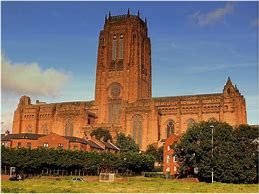At the end of May my twice-weekly online gathering, A Leap in the Dark, featured a pre-launch of The Blackbird, a fine new novel by Claire Allen, published this week by Henningham Family Press. We enjoyed an excellent reading by the author and some context-setting by the publishers, and we all braced ourselves expectantly for the publication, because any new book from HFP is cause for a celebration.
At the time I'd read The Blackbird in pdf form, which is never the best way to read anything. I need to handle a text, to annotate and riffle, not to scroll, and this is a novel that invites conscientious riffling. I now have a copy of the trade paperback edition, and plan to read it again, but really for the first time, if you see what I mean. I look forward to that, because it's a wonderful novel (and I suppose one has to mention in passing Golding's The Spire as a noble predecessor) and because as an object it's a book of quite outstanding beauty, like all HFP publications (more on this in a moment).
Claire Allen deftly organises two narrative strands around the main character of Hope, strands set respectively in the Liverpool Blitz during the Second World War and in the present day, in London. Here, on the Blackbird Housing Estate (based loosely on the now-demolished Heygate Estate in the Elephant and Castle) Hope cares for her husband, a retired civic sculptor who suffers from Alzheimer’s. Hope's father, we learn, worked on the construction of Liverpool Cathedral (above), the colossal pile designed by George Gilbert Scott on which construction began in 1904 and continued until 1978.
Other bloggers and commentators have already shared their thoughts on the text, so I shall add only that Clare Allen''s prose is both plain and simple (in the very best senses), and very frequently piercing. This is a beautiful novel, generous and humane in range and depth.
You can read an extract here: https://unbound.com/books/the-blackbird/
David and Ping Henningham set dizzyingly high production standards for all of their publications, whether the trade paperback or the covetable limited edition deluxe version (of which I understand a handful remain unsnapped-up). How they do this while keeping the cover price so affordably low is a mystery.
I learn from their website that they have sourced materials from G.F Smith, paper merchant to Virginia Woolf’s Hogarth Press, and that all editions of The Blackbird 'will be covered with Gmund Urban, which uses “genuine pulverized cement” to recreate concrete’s subtle texture and sparkle. The
Römerturm paper mill has created “tradition and dynamic modernism in one material."
So - paper made from cement to reflect the book's partial setting on a post-war housing estate. There's a thing.
And has anyone else yet mentioned the beautiful illustrations scattered throughout the text, by David Henningham? They add weight and texture, and I'm surprised it isn't a more common practice, although I suppose it helps if the publisher happens to be an accomplished fine artist. Apart from the inclusion of smudgy black and white photographs (a lamentable development pioneered by W G Sebald and copied too often since), illustrations seem to have largely disappeared from contemporary fiction, apart from those expensive Folio editions. Sort-of relatedly, I recall that the standard paperback edition of Joyce's Dubliners featured some charming, rather Quality Streetish pictures by Robin Jacques. Here's my copy, complete with rogue apostrophe in Finnegans Wake.
More on The Blackbird here.



No comments:
Post a Comment